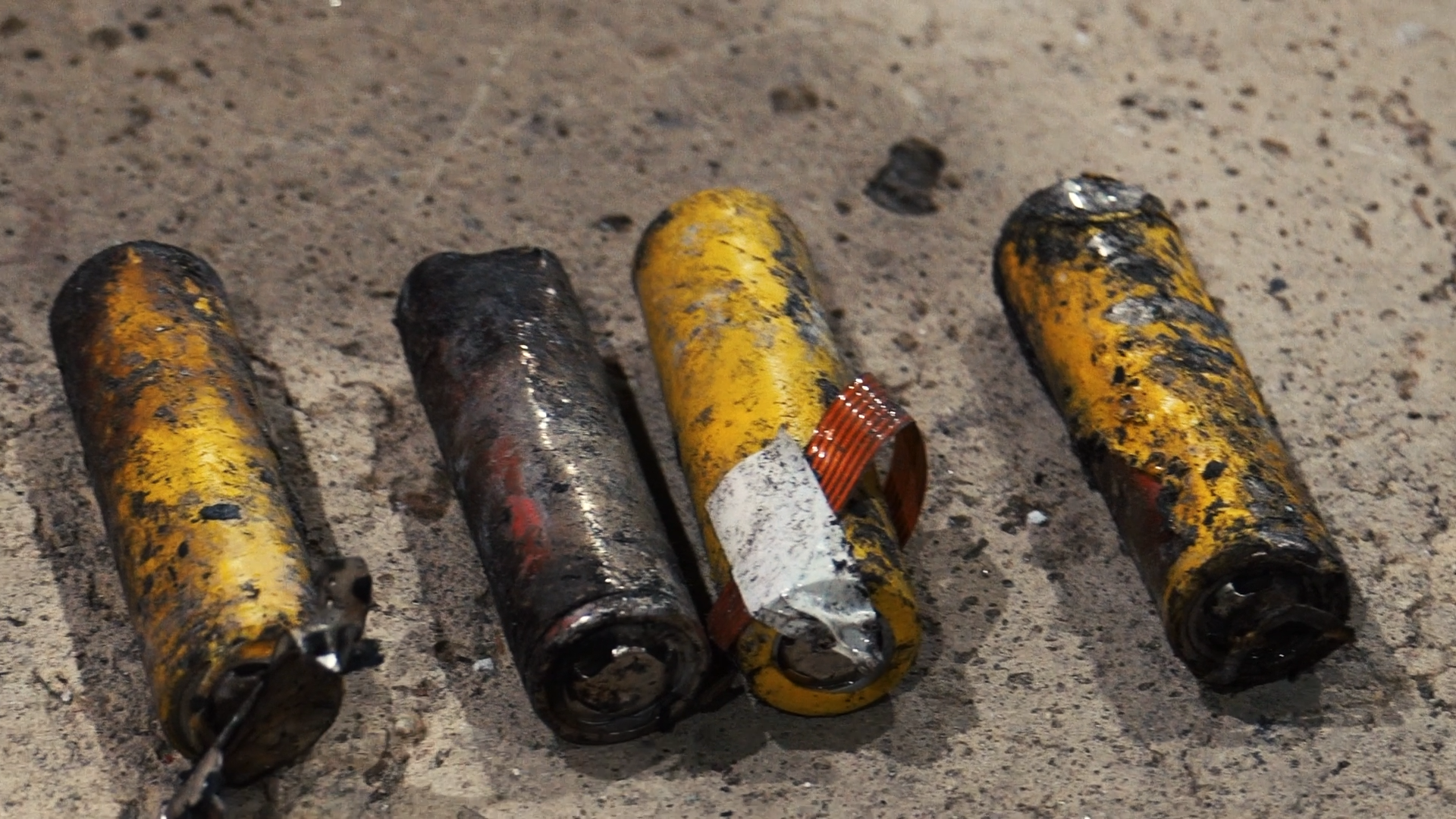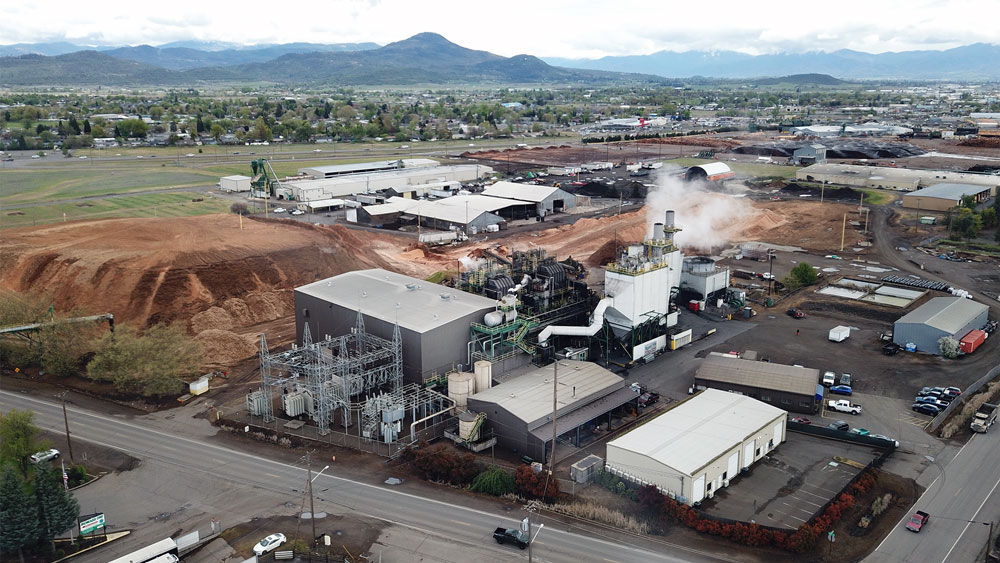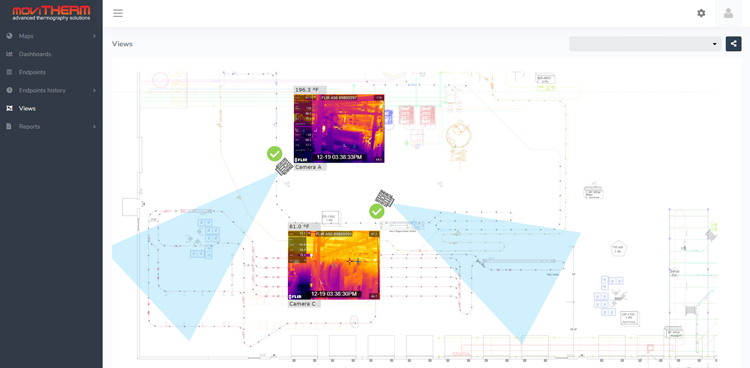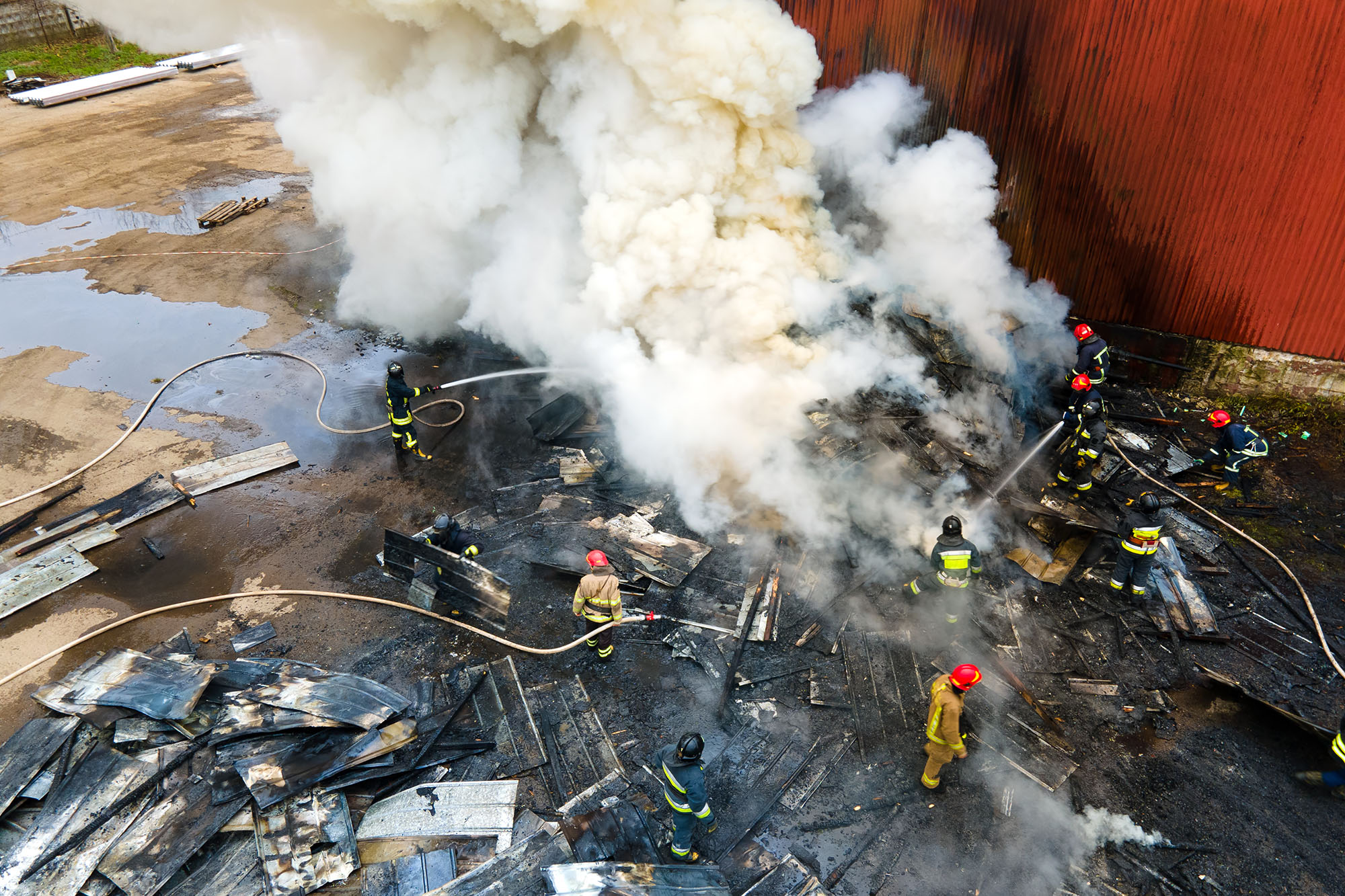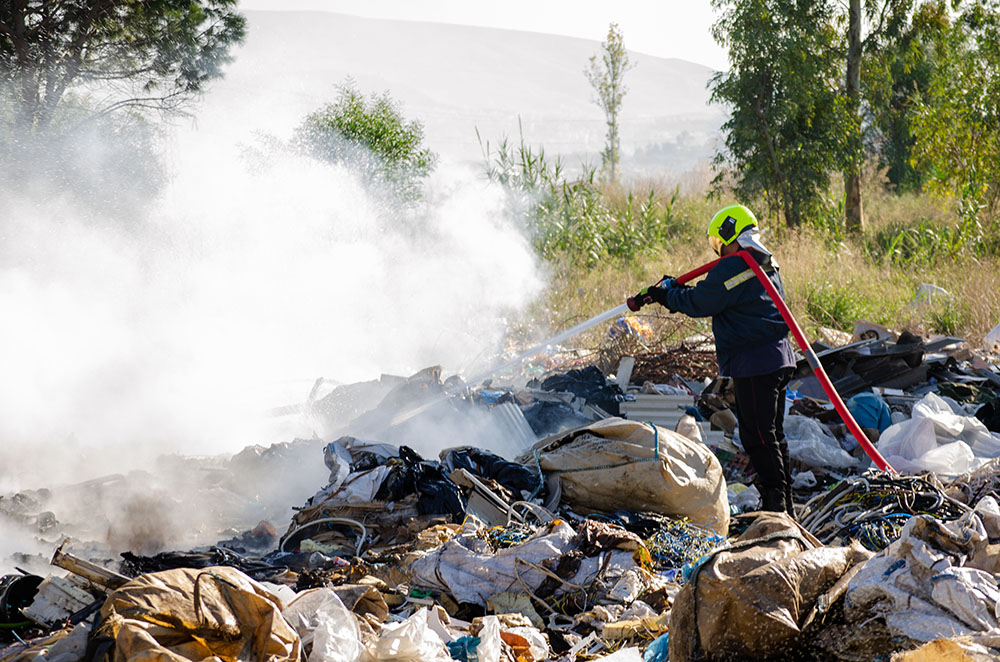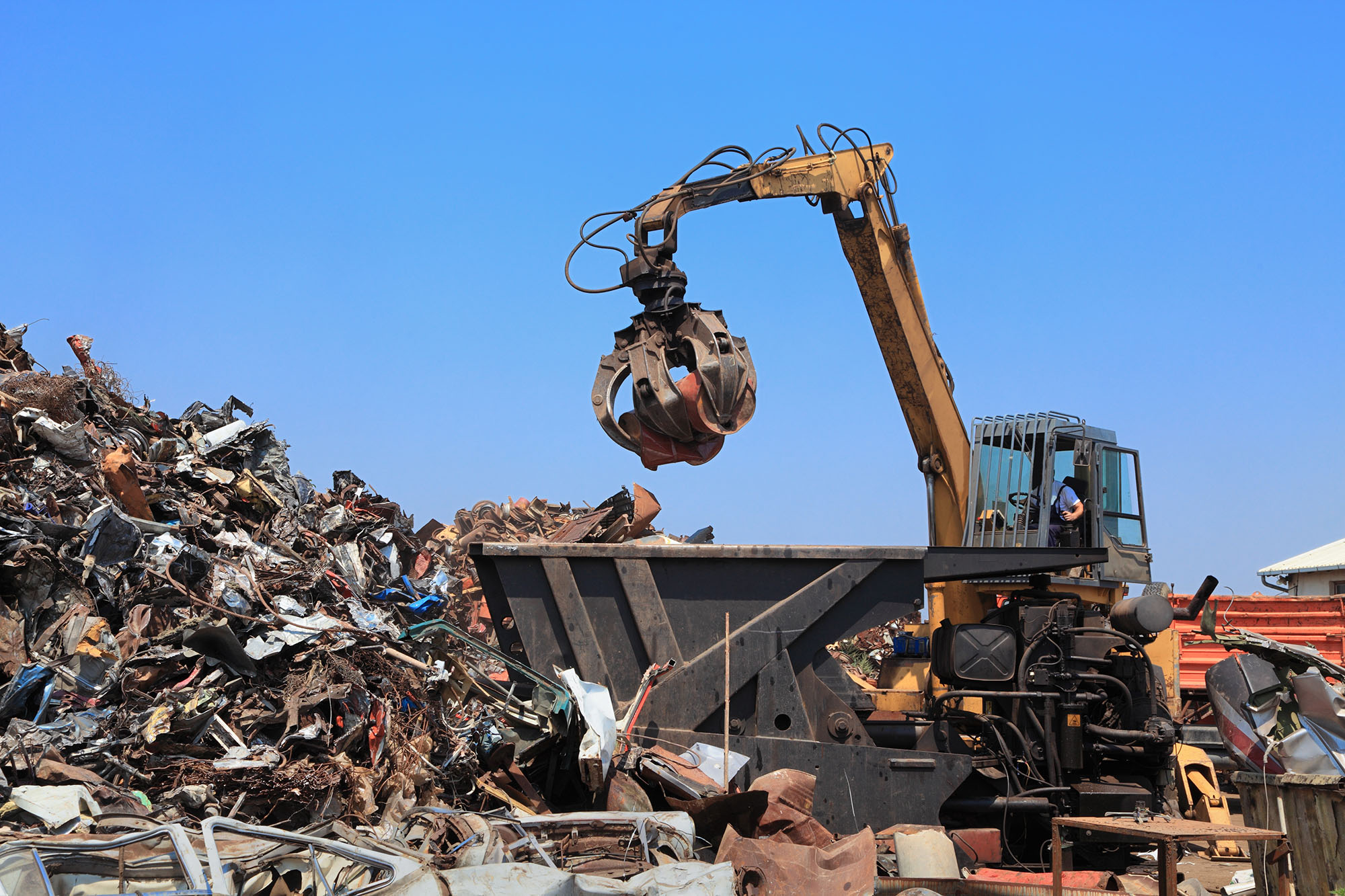The Risk of Battery Thermal Runaway and How to Prevent It
Battery thermal runaway is becoming a huge liability to companies that store and handle battery products. In recent years, battery storage, charging, and recycling centers have experienced increased fire activity caused by lithium ion battery thermal runaway.
One solution to reducing the risk of a battery fire are infrared cameras. Infrared fire detection systems monitor large areas and are able to detect heat releasing from battery packs or single batteries. Infrared cameras are the only device that are able to detect early signs of fire formation.
Risk of Thermal Runaway
Thermal runaway occurs in lithium ion batteries. Manufacturing defects or external misuse like overcharging, overheating, puncturing, or being crushed can lead to thermal runaway in lithium ion batteries. Thermal runaway occurs when the temperature of the li-ion battery reaches a critical state.
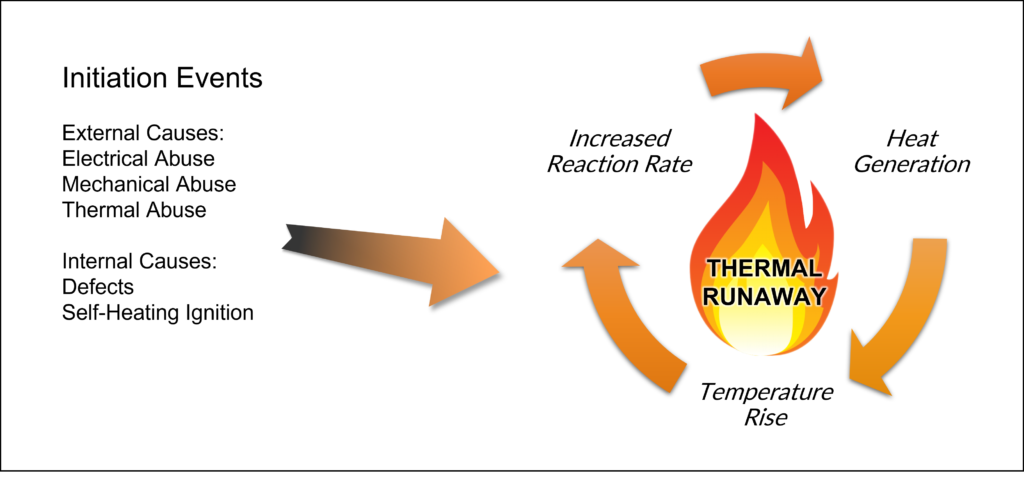
Lithium-Ion Battery Thermal Runaway Initiation Events
Internal causes of spontaneous ignition include coating defects at the electrode surface, contamination particles, and poor welds. Typically, these defects cause electrical shorts during operation that generate heat.
External causes include:
- Electrical abuse from overcharging.
- Mechanical abuse via crushing or puncture.
- Thermal abuse from exposure to high temperature environments.
External initiating events are related to each other. For example, mechanical abuse from a puncture of the battery cell causes a short circuit, which is electrical abuse. The electrical abuse creates heating, which increases the lithium ion cell temperature, causing thermal abuse, which can trigger thermal runaway.
Preventing Thermal Runaway With Infrared Cameras
Various fire detection sensors are available today that alert of fire formation. The following chart shows the relative detectability of fire detection devices at different stages of fire development with corresponding damage levels.
Infrared camera systems are the first to alert before a fire develops. They are able to “see” heat generated by batteries early in the fire development process. Thermal cameras detect “fire” before forming smoke particles or flames.
Correct sensor selection and placement for battery monitoring are critical to ensure optimum detection performance. For outdoor or high airflow installations, infrared sensors are best for detection.

Fire Detector Response Time and Fire Progression vs. Damage Severity
Leveraging the Advantages of IoT
Fire safety for battery storage, charging, and handling is an area that realizes the benefits of IoT. With smart fire detection systems, potential fires can more readily be detected and prevented.
With IoT, facility managers can connect multiple facilities into a central monitoring and alarming dashboard. Understanding the situation at all facilities improves the oversight and management of multiple systems from a single control point.
Smart fire detection systems can improve emergency planning by using algorithms and analytics. For example, analytics can consider factors such as:
- The number of people in the facility
- Facility maps
- Location of the fire
- The rate at which the fire is spreading
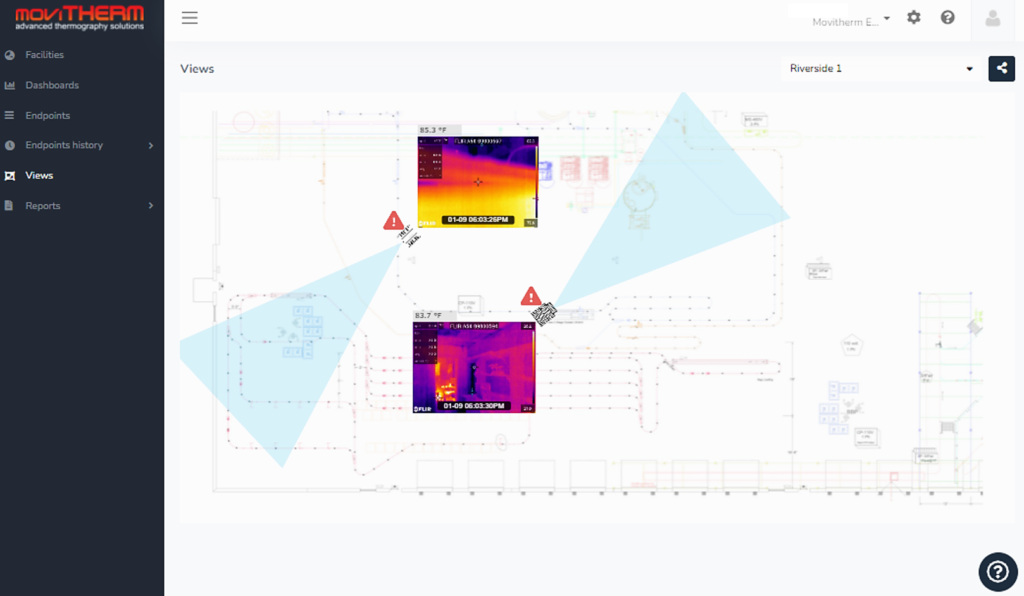
Sample Map View display from a cloud-based IoT Early Fire Detection Program
Conclusion
It is important to note that infrared fire detection systems do not replace existing detection and response protocols. Instead, the system functions as an early warning system – detecting areas in the facility where ignition may occur. New detection methods for heat, smoke, and fire are frequently developing.
Many new detection devices include wireless capabilities that make integrating IoT to infrared cameras a straightforward exercise. Beyond alarms and notifications, IoT infrared fire detection systems can provide automation controls like initiating and directing an extinguishing system.
Fire detection systems that leverage cloud computing require less hardware with a reduced installation burden. Available communication technology can be added to existing detectors, making IoT retrofitting existing systems easy. By warning earlier on the pathway to ignition, managers of the battery chain avert costly and potentially life threatening fires. First responders can react before the fire is permitted to start and spread.
About moviTHERM
moviTHERM – Advanced Thermography Solutions was founded in 1999. The company offers solutions for plastic welding, package sealing, and non-destructive testing. In addition, moviTHERM provides IoT Cloud monitoring solutions for thermal imaging applications for early fire detection, machine condition monitoring, and other applications. moviTHERM is a Teledyne Flir Premium Partner and master distributor for FLIR Thermal Cameras for automation and science applications.




